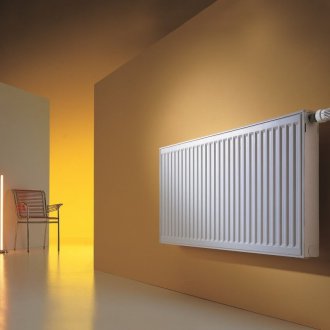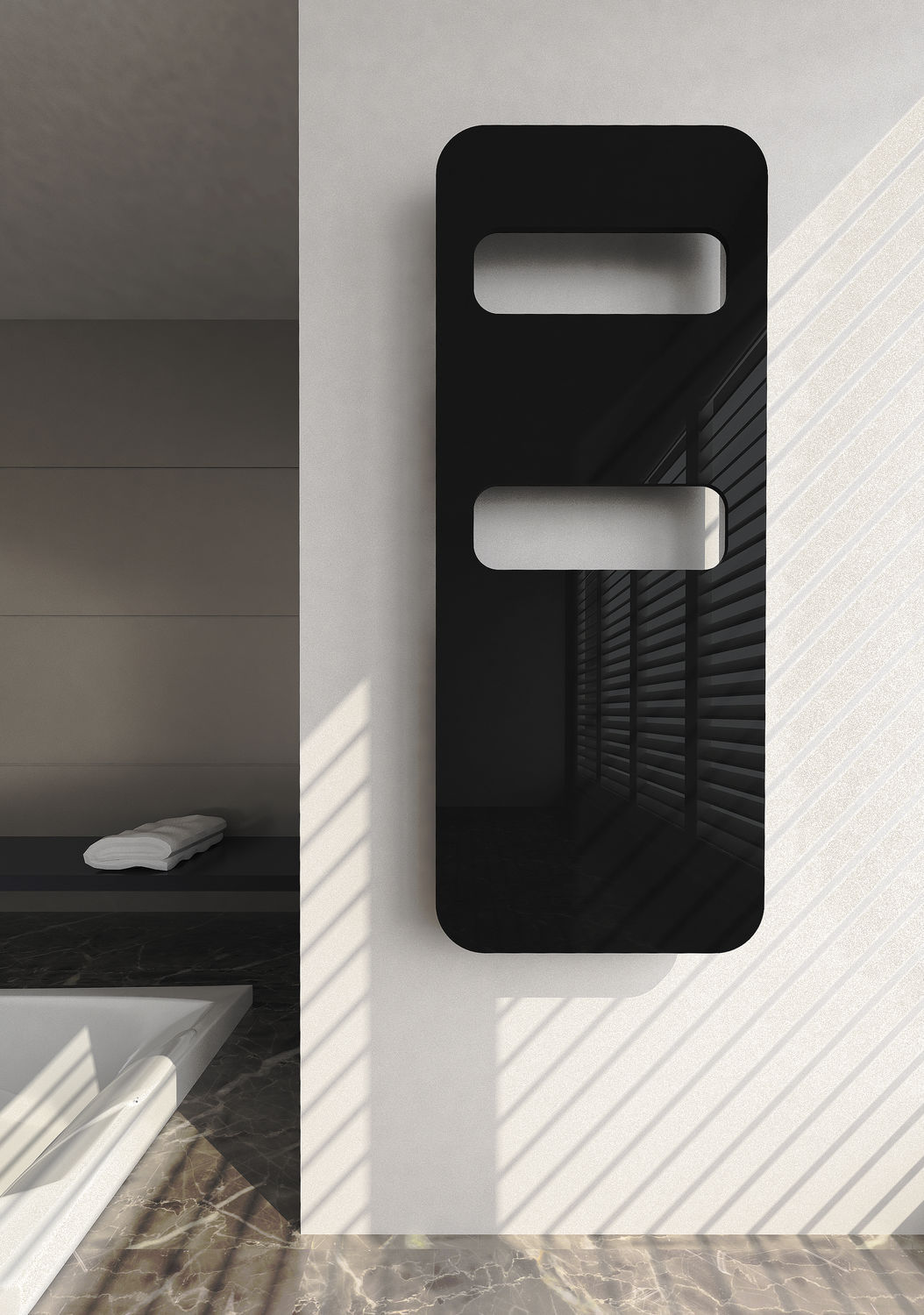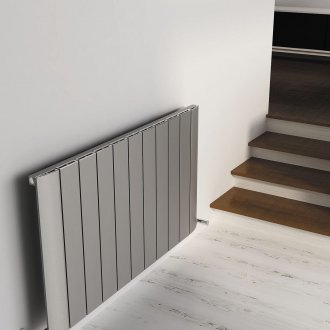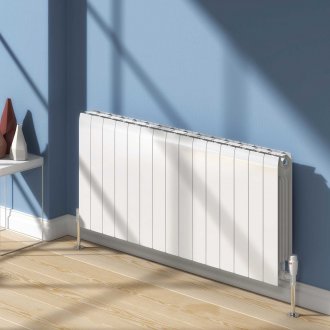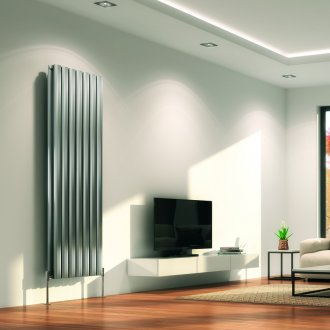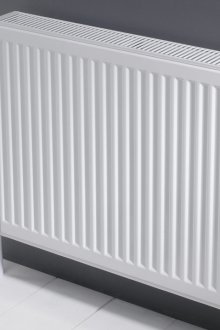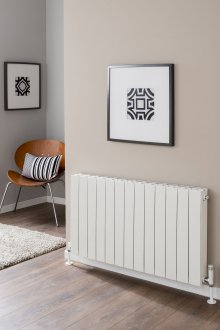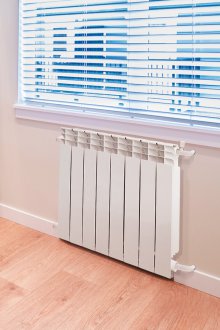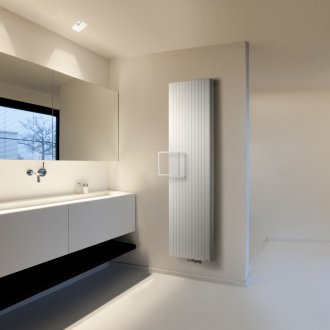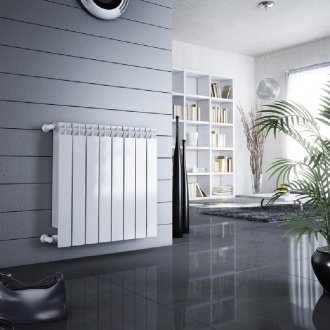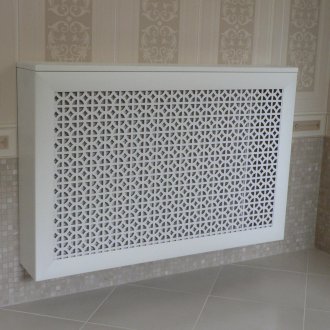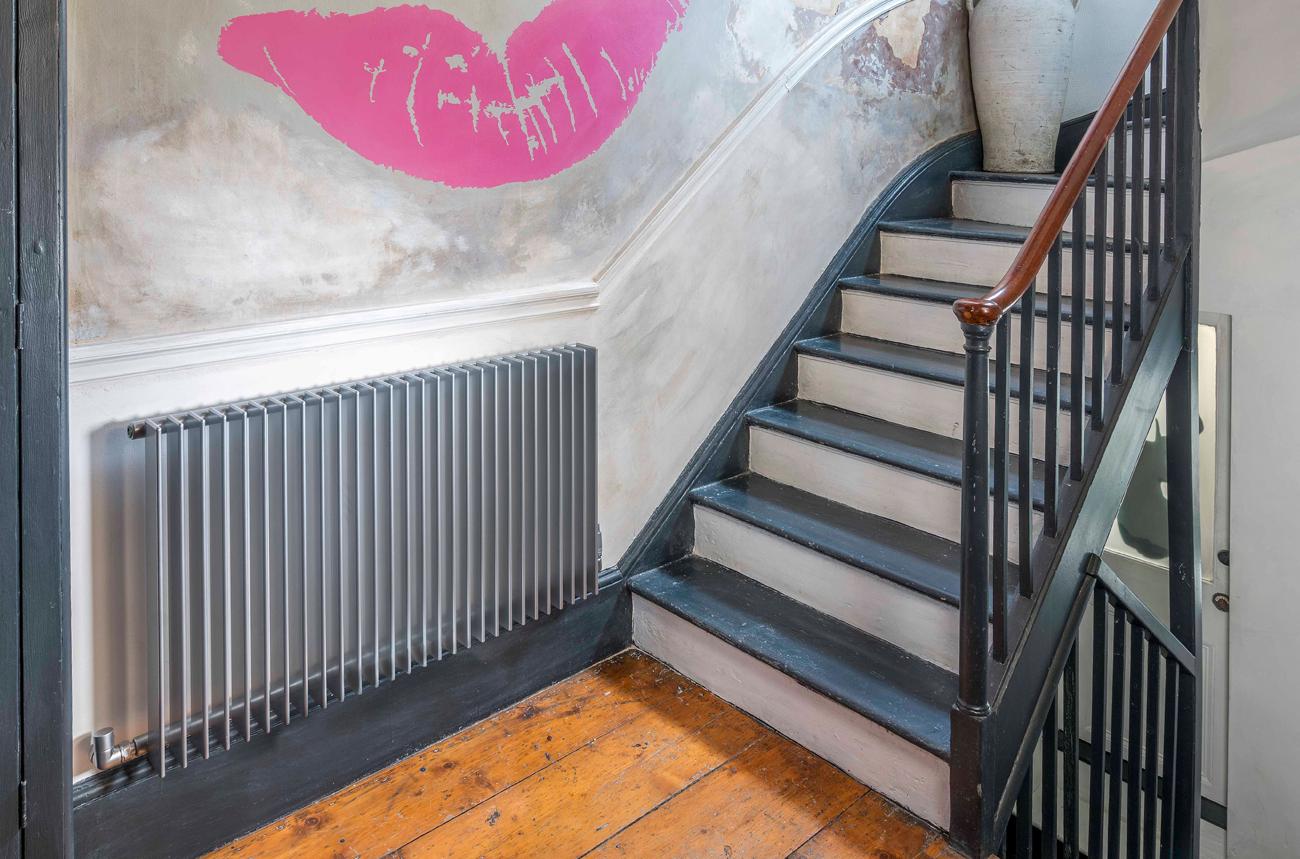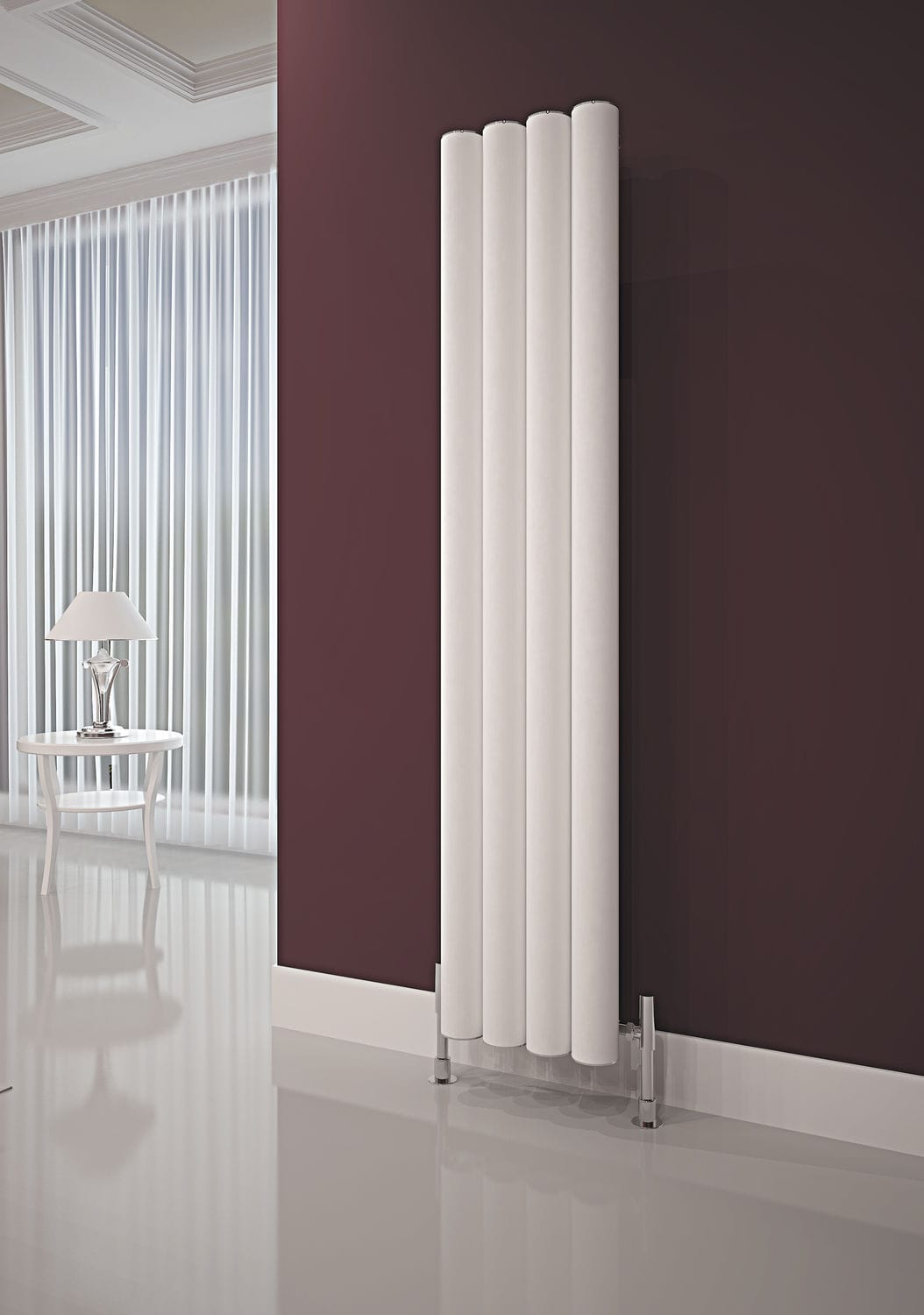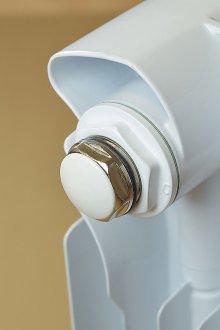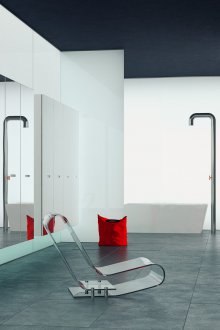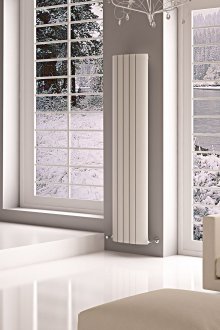Aluminum radiators: advantages and varieties (20 photos)
Content
The aesthetic appearance and technical characteristics of such heating devices allow their use in private homes, apartments, schools, hospitals, kindergartens or industrial buildings.
To choose the right device for heating, you need to know that certain types of aluminum radiators can vary in design, number of sections, production method and technical characteristics. However, they all have a number of obvious advantages compared to their cast-iron predecessors.
Advantages and disadvantages of aluminum radiators
One of the advantages that brought aluminum radiators to the first lines of sales was their quite affordable price. In addition, these heating systems differ:
- small dimensions and light weight;
- attractive appearance, allowing you to use them for decoration in any style;
- simplicity of installation work and the ability to regulate the temperature using special regulators;
- short time of heating and cooling of heating appliances;
- the presence of large diameter pipes, which does not allow them to quickly become clogged;
- the ability to adjust power by reducing or increasing the number of vertical sections;
- long operational life - from 10 to 25 years.
During heating, the aluminum alloy of which the system is made does not emit substances harmful to health, and the powder enamel with which the radiators are coated does not spread a specific smell and does not require regular coloring.
It should be listed and a few disadvantages of aluminum radiators:
- sensitivity to pressure changes in the heating system;
- the possibility of corrosion processes as a result of increased acidity of the coolant;
- the need to regularly remove air, which inevitably accumulates in the collectors;
- leakage in the area of section joints;
- poor compatibility of aluminum batteries with steel or copper pipes, and the occurrence of electrochemical corrosion at the junction.
However, most modern manufacturers use special aluminum alloys and perform additional anti-corrosion treatment, which reduces the list of disadvantages of aluminum radiators.
Types of aluminum radiators
Before deciding which aluminum radiator device will be optimal for a particular room, you should find out what are the differences between the various types of such systems. By the method of production, there are two main varieties of such devices.
Cast radiators
The sections of radiators are cast under high pressure, placing the alloy in special forms, where it takes a solid state. Therefore, the shape of the radiators can be very different. The surface of such batteries is perfectly smooth, and the dimensions correspond to all the specified parameters. The advantages of cast heaters are:
- increased heat transfer coefficient due to the presence of additional internal plates;
- the ability to make heating systems of the required size, increasing the number of sections;
- the large wall thickness and solidity of the product make the structure very durable;
- ease of replacing damaged sections;
- multi-rib radiator system allows you to create the effect of a thermal curtain of the window when the heat flux goes vertically up and blocks the path of cold air from the window opening.
Cast radiators are manufactured with additives in silicon alloy (about 12%). This provides increased product strength without loss of thermal conductivity.
Extrusion radiators
Extrusion production differs in that during the production process the alloy is “pushed” through a special mechanism, which is why they differ from the cast products in the production method. With this manufacturing method, you have to make two separate parts (front and back) and subsequently connect them by thermal pressing. Their advantages include:
- light weight, size;
- fast heating process;
- ease of installation;
- aesthetic appearance and the ability to use them for rooms of various styles;
- low price and profitability due to the use of a temperature regulator;
- lack of joints between separate sections, which increases their reliability.
Among the disadvantages of extrusion batteries are:
- inability to increase or decrease the number of sections;
- susceptibility to corrosion processes;
- a small surface area (compared with cast counterparts), which reduces the thermal conductivity;
- short term of operation (up to 15 years).
Another variety of such heating devices are anodized aluminum radiators. These products in the production process go through the stage of anodic or electrochemical oxidation of the inner and upper surfaces. This creates a high strength protective film and increases corrosion resistance. Such systems top the rating of aluminum heating radiators, and their only minus is the high price.
Which aluminum radiator to choose depends on the design of the heating system, the area of the room, and the parameters of the coolant. Modern manufacturers offer radiators for the home and other rooms suitable:
- for heating systems with both natural and forced circulation of the coolant;
- they can be installed in one or two pipe heating systems with horizontal or vertical piping.
In addition to differences in technical characteristics and production method, there are a large number of aluminum radiators that differ in shape and design. Specialized retail chains can offer radiators with large vertical sections. Today you can purchase standard or reinforced aluminum radiator systems. Standard models include heating appliances of the European standard. The main difference between the reinforced structures is that they are able to work at a working pressure of 16 atmospheres.
How to choose aluminum radiators?
All types of aluminum radiators can last quite a long time if you approach the selection process responsibly. It is very important to purchase equipment only in large specialized networks. At such points of sale there are always qualified consultants who can advise which aluminum radiator will meet all the necessary parameters. In addition, you must:
- Know exactly all the parameters of the heating network where the heating equipment will be installed;
- choose the best heater brand, which has a high reputation and has long been on the market;
- take into account that the weight of the device is too light indicates that the thickness of the side ribs and the back wall is too small, which means that such devices will have small power indicators;
- choosing a model, it is recommended to thoroughly and carefully study the parameters specified in the technical passport;
- pay attention to warranty.
You need to know that good quality heating equipment cannot be cheap. Sometimes manufacturers reduce the diameter of the vertical collectors to reduce the cost of the device. This leads to the fact that plaque accumulated on the internal stacks will cause the radiator to fail. When buying, be sure to check the availability of all necessary components.
Standard equipment should include:
- a set of brackets, the number of which depends on the width and weight of the radiator;
- a valve for lowering air from the system (Mayevsky crane);
- special racks;
- a set of plugs (left and right);
- gaskets;
- Ball Valves.
On a site that offers heating equipment, you can find a calculator and choose the most suitable model for technical parameters. In order not to make a mistake in choosing a device for space heating, it is enough to enter the necessary parameters into the proposed form and make an independent calculation of aluminum radiators:
- the area and height of the ceiling in the room;
- directions to which windows and walls go (north, south, east or west);
- point out the walls and windows on the windy or windward side;
- an indicator of the maximum possible negative temperatures in the winter in this region;
- indicate which rooms (heated or not) are located above and below the room where the heating system will be installed;
- height and width of the window opening;
- presence of doors to the balcony or the street;
- heating equipment insertion diagram;
- type of installed windows (plastic or wooden);
- the degree of insulation of the outer walls;
- place of the proposed installation of the radiator;
- power of one section of the selected model (Watt).
An analysis of this information will help you to calculate the power of the device necessary for heating as accurately as possible, which can pass the full term of operation without breakdowns. In addition, it is very important to install the device, in compliance with all the rules for mounting and connecting the radiator. It must be remembered that even the best aluminum radiators installed incorrectly can fail very quickly.

